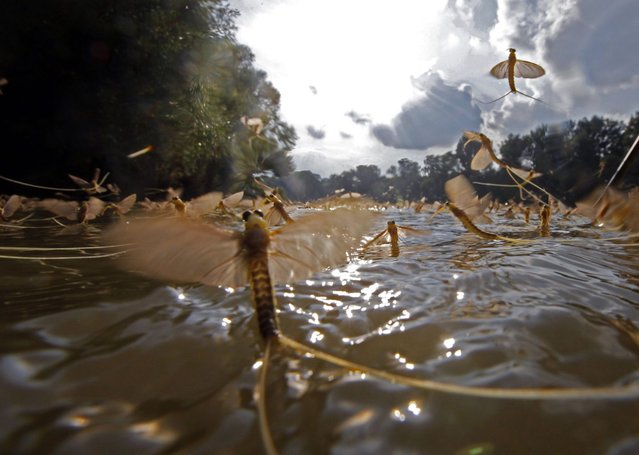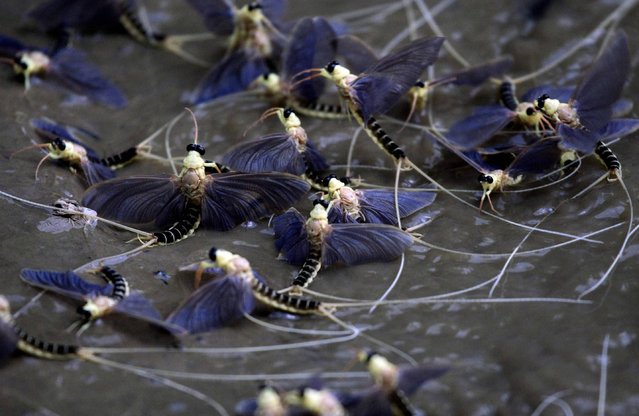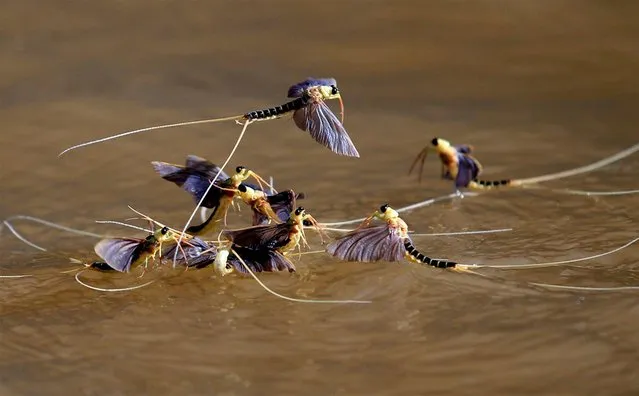These stunning images show an enormous swarm of long-tailed mayflies magically rising out of the water to mate. The spectacular show on the Tisza river, near Tiszainoka in Hungary, only lasts for a few hours because the mayflies – also known as Tisza flies because of their prevalence in the river – live for just one day.
After mating, females lay their eggs that sink to the bottom of the river where larvae emerge about six weeks later. The larvae, or nymphs, mature in the mud for three years before they hatch and begin the cycle again.
Tisza mayflies are the largest mayflies in Europe and can grow up to 5 inches (12,7cm) long. While they were once found in a number of European countries, they can now only be observed in the River Tisza, a tributary of the Danube that winds through Serbia, Hungary and Romania. (Photos by Laszlo Balogh/Reuters)
After mating, females lay their eggs that sink to the bottom of the river where larvae emerge about six weeks later. The larvae, or nymphs, mature in the mud for three years before they hatch and begin the cycle again.
Tisza mayflies are the largest mayflies in Europe and can grow up to 5 inches (12,7cm) long. While they were once found in a number of European countries, they can now only be observed in the River Tisza, a tributary of the Danube that winds through Serbia, Hungary and Romania. (Photos by Laszlo Balogh/Reuters)






14 Jul 2013 11:20:00,
post received
0 comments
